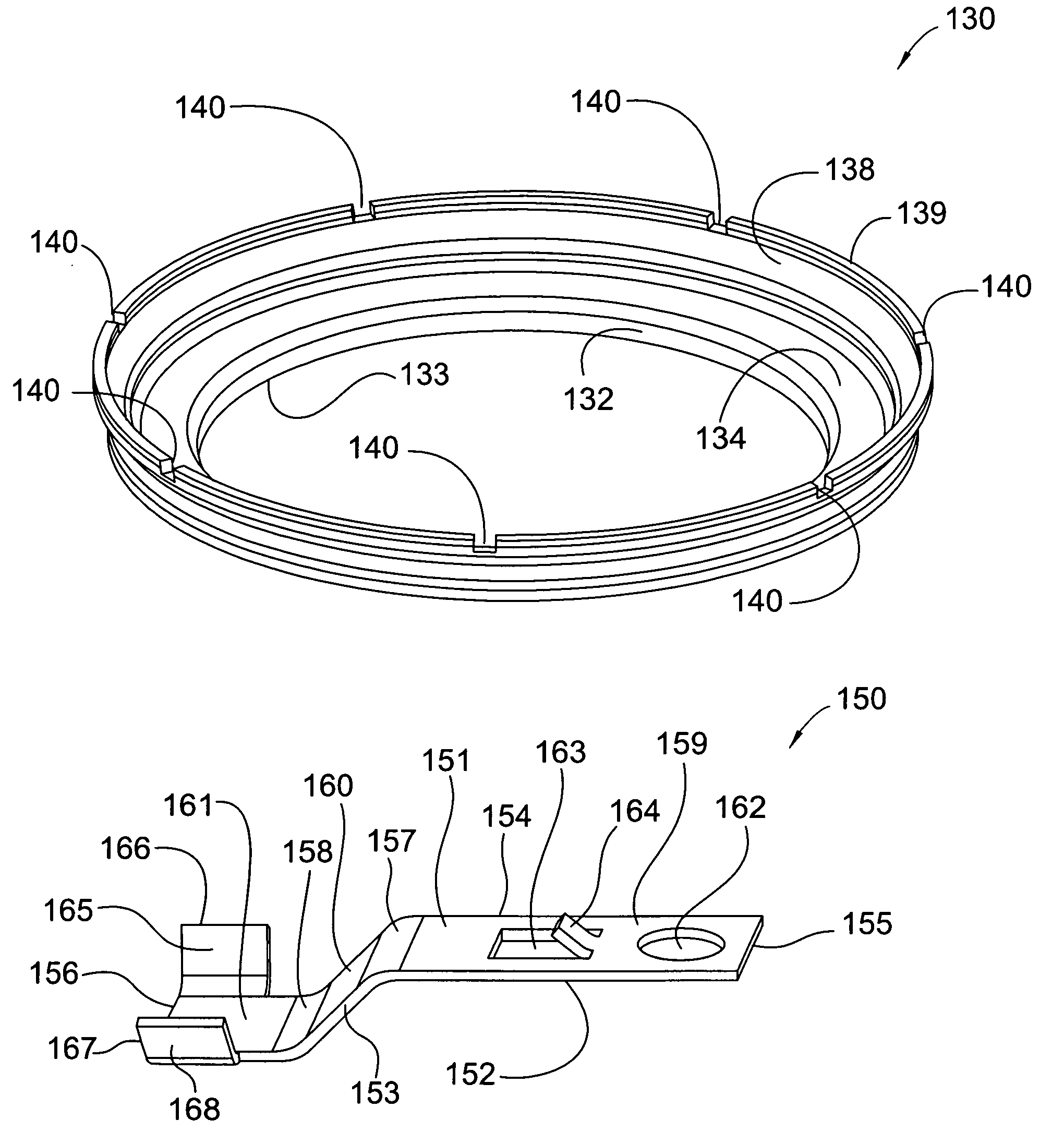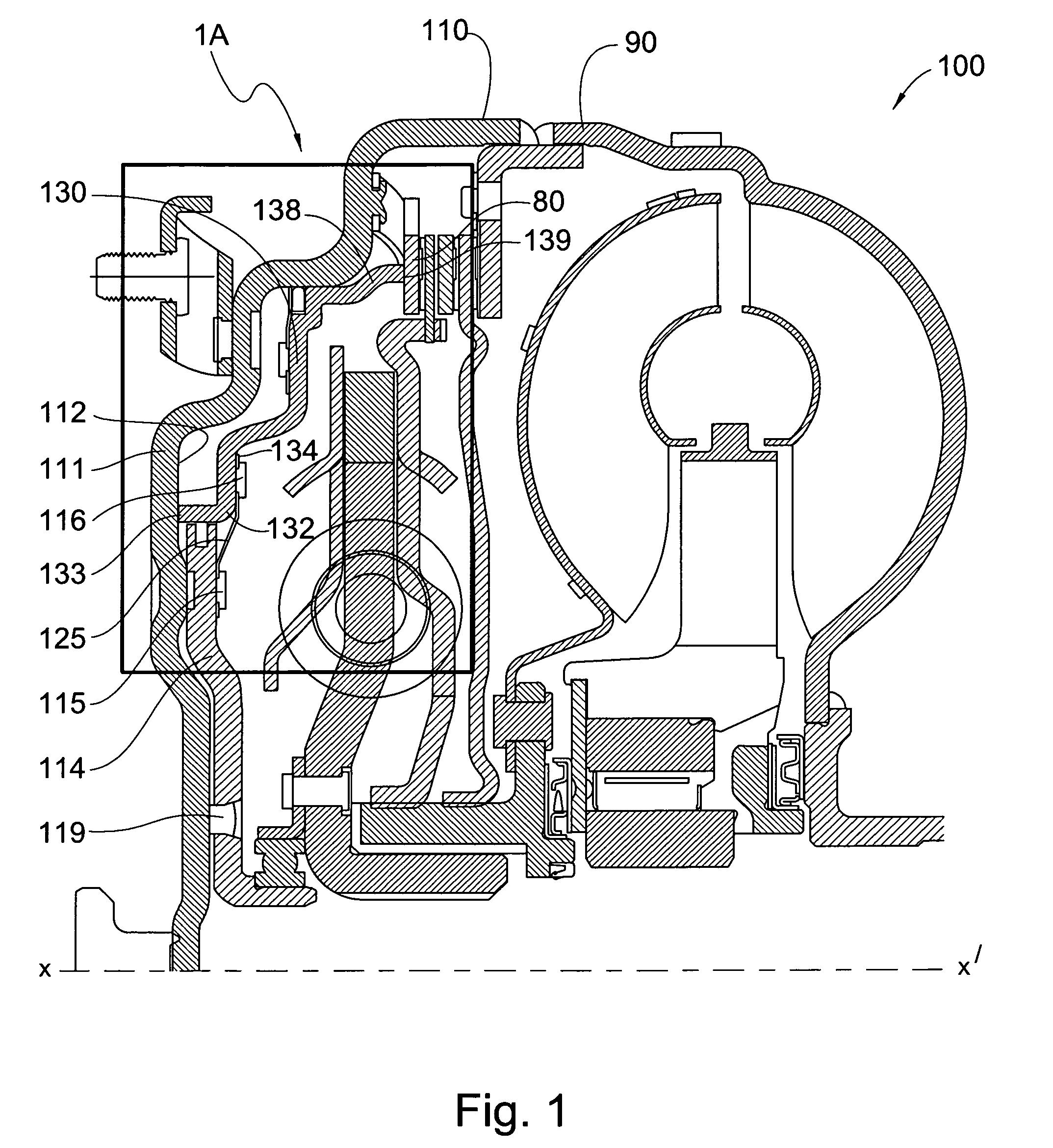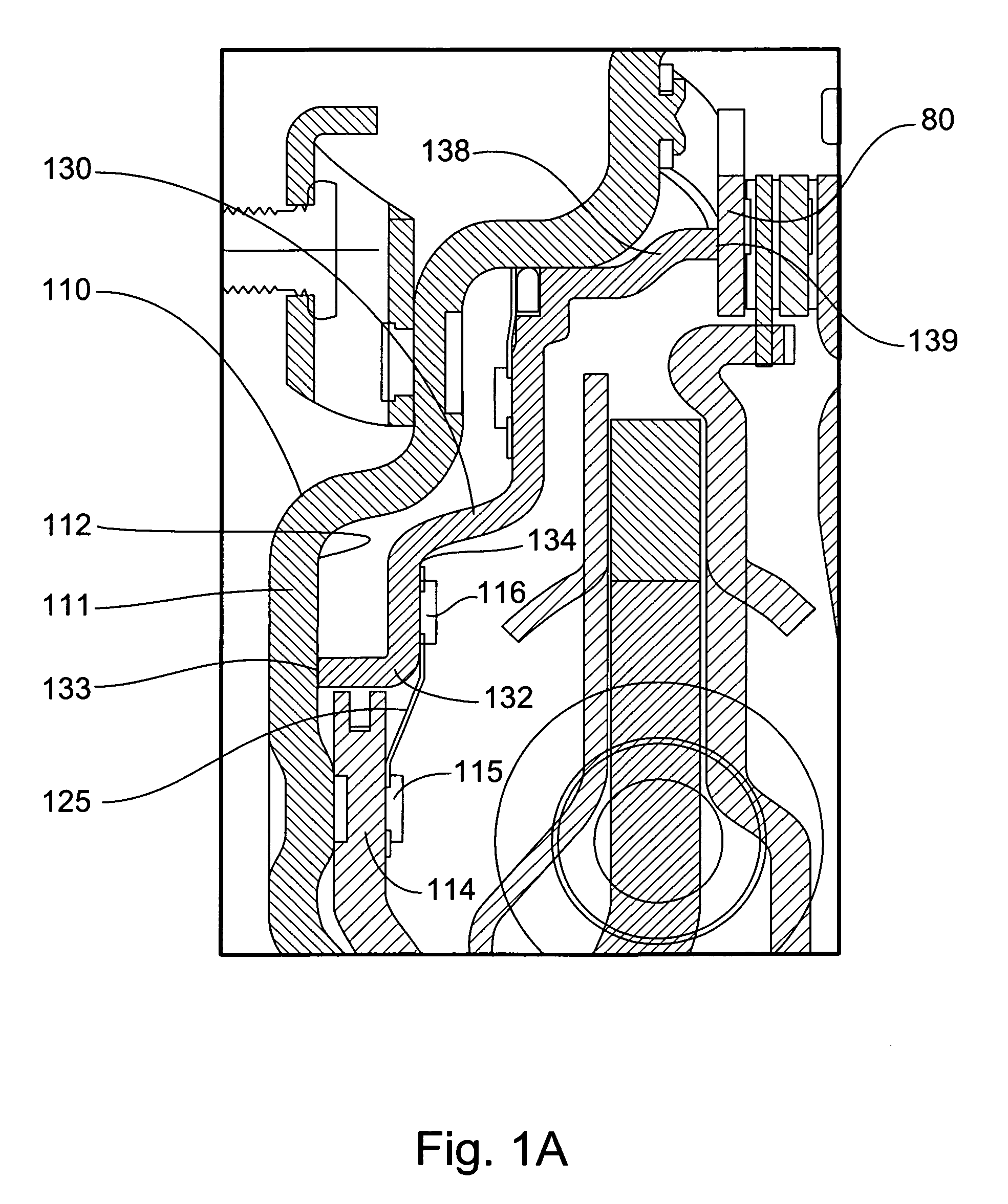Anti-rotation mechanism for a closed piston torque converter
- Summary
- Abstract
- Description
- Claims
- Application Information
AI Technical Summary
Benefits of technology
Problems solved by technology
Method used
Image
Examples
second embodiment
[0037]FIG. 2 is a partial cross-sectional view of present invention piston plate attachment in a torque converter 100. In this embodiment, which does not include leaf spring 125, cover 110 further comprises at least one dog 105, but preferably a plurality of dogs 105, axially extruding toward the rear from inner radial surface 112. Piston plate 130 further comprises at least one receiving element 106, but preferably a plurality of receiving elements 106, axially extending toward the front from front annular edge 133. The plurality of receiving elements 106 are operatively arranged to axially and slidingly engage the plurality of dogs 105. Once slidingly engaged, the plurality of dogs 105 prevents piston plate 130 from rotating relative to cover 110, while allowing its axial movement.
third embodiment
[0038]FIGS. 3-5A show the present invention. In this embodiment, at least one leaf spring, but preferably a plurality of leaf springs, are used to secure the piston plate to the drive plate. The drive plate is rotationally fixed to the torque converter cover, for example, with leaf springs. In an alternative embodiment, however, the leaf spring attaches directly from the piston to the cover, for example, with extruded rivets.
[0039]FIG. 3 shows a perspective view of piston 130, which in this embodiment further comprises at least one plate cut 140, but preferably a plurality of plate cuts 140 for receiving a plurality of leaf springs 150.
[0040]FIG. 4 shows a perspective view of leaf spring 150, which is generally flat and elongate and comprises: top surface 151 and bottom surface 152; first end 155 and second end 156; sides 153 and 154; first segment 159, second segment 160, and third segment 161; and, bend 157, arranged between first segment 159 and second segment 160, and bend 158, ...
fourth embodiment
[0042]FIGS. 6-8A show the present invention. In this embodiment, at least one leaf spring, but preferably a plurality of leaf springs, is used to secure the piston plate to the drive plate. The drive plate is rotationally fixed to the torque converter cover, for example, with leaf springs. In an alternative embodiment, however, the leaf spring attaches directly from the piston to the cover, for example, with extruded rivets. FIG. 6 shows a perspective view of piston 230, which in this embodiment further comprises at least one plate cut 240, but preferably a plurality of plate cuts 240 for receiving a plurality of leaf springs 250. Plate cut 240 includes peg 242 disposed generally in the middle of plate cut 240.
[0043]FIG. 7 shows a perspective view of leaf spring 250, which is generally flat and elongate and comprises: first end 255 and second end 256; sides 253 and 254; first segment 259, second segment 260, and third segment 261; and, bend 257, arranged between first segment 259 an...
PUM
 Login to View More
Login to View More Abstract
Description
Claims
Application Information
 Login to View More
Login to View More - R&D
- Intellectual Property
- Life Sciences
- Materials
- Tech Scout
- Unparalleled Data Quality
- Higher Quality Content
- 60% Fewer Hallucinations
Browse by: Latest US Patents, China's latest patents, Technical Efficacy Thesaurus, Application Domain, Technology Topic, Popular Technical Reports.
© 2025 PatSnap. All rights reserved.Legal|Privacy policy|Modern Slavery Act Transparency Statement|Sitemap|About US| Contact US: help@patsnap.com



